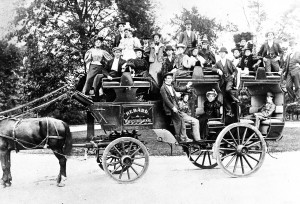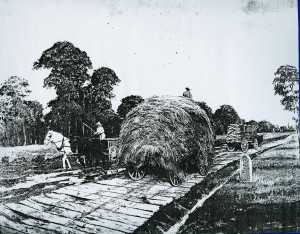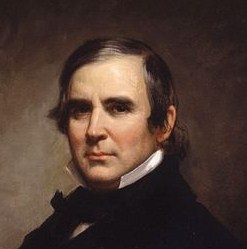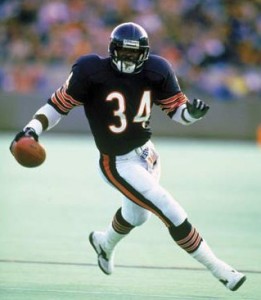Few Western Springs roads can boast as much history as Ogden Avenue, which was originally developed by Native Americans and continues in use to this day.

Early Ogden Avenue Stagecoach
The next time you’re driving along Ogden Avenue, try to envision what the road looked like in the 1700s. In those days, it was a French and Indian fur-trading route between Ft. Dearborn (now Chicago) and Lisle. First known as the “Ottawa Trail”, it was little more than a mud-packed pathway. However, by the 1830s, stagecoach service was being offered three times a week. For five dollars, a considerable sum in those days, one could ride from Lake Michigan to Lisle. There was even an inn for stagecoach passengers located in what is now Hinsdale.
As more and more horse-drawn coaches and wagons traveled the route, the road became rutted and, during rainy periods, was almost impassable. So, in the 1840s, some entrepreneurs decided to borrow an idea from Canada and began building a “plank road” along the same route. Called the “Southwest Plank Road”, it was constructed using wooden planks, 3 inches thick and 8 feet wide. These were nailed to log stringers at the outer edges. The planks kept wheeled vehicles from getting bogged down in the marshy ground.

Hay wagon on Plank Road – circa 1850
To cover the cost of constructing and maintaining the road, the owners charged toll fees: 37¢ for a four-horse vehicle, 25¢ for a single team of horses, 12¢ for a horse with rider, 4¢ for a head of cattle, etc. While this type of road was more dependable and less bumpy than the old muddy trails, they became known as the “poor man’s railroad”. And, because the plank road was just eight feet wide, two-way traffic always posed a problem, i.e., forcing one wagon or coach to temporarily leave the road so the other could pass.
Despite this, the Southwest Plank Road was a big success, facilitating the flow of farm goods into Chicago and the transport of finished products to the west. However, the road eventually began deteriorating due to constant use by horse-drawn vehicles, as well as the effects of weather. And, after the Chicago, Burlington, and Quincy Railroad began service in 1863, the plank road’s traffic began to decline.

William B. Ogden – Chicago’s First Mayor
In the 1870s, Western Springs maps described the road simply as “North Boulevard”. However, in 1877, the entire length of the road was renamed Ogden Avenue after the first mayor of Chicago, William B. Ogden.
By 1874, the plank road disappeared and eventually became just another gravel road. But, when Daniel Burnham published his master plan for Chicago in 1909, Ogden Avenue was proposed as one of the key arterial streets for handling the expected growth in auto travel.
By 1920, the road had become a major thoroughfare, was paved, and was then widened to four lanes during the 1930s. This made it a major auto and truck route into Chicago, much like one of today’s expressways. In fact, as recently as the 1950s, village residents near Ogden had to endure the odor of cattle trucks passing through town en route to Chicago’s Union Stockyards.
To their credit, the villages of Western Springs and La Grange restricted early commercial development along Ogden Avenue in favor of residential. While a filling station and a popular restaurant were built near Ogden and Gilbert Road, the only remaining trace of that era in Western Springs is a small auto repair shop located at Harvey Avenue.

Chicago Bears’ Walter Payton – #34
Although recognized locally as Ogden Avenue, the portion of the road passing through Western Springs is also designated “U.S. Route 34”. And, while there are no highway designation signs known to the author, the State of Illinois has also designated the entire length of Route 34 in Illinois as the “Walter Payton Memorial Highway” in memory of the Chicago Bear’s most famous #34.
